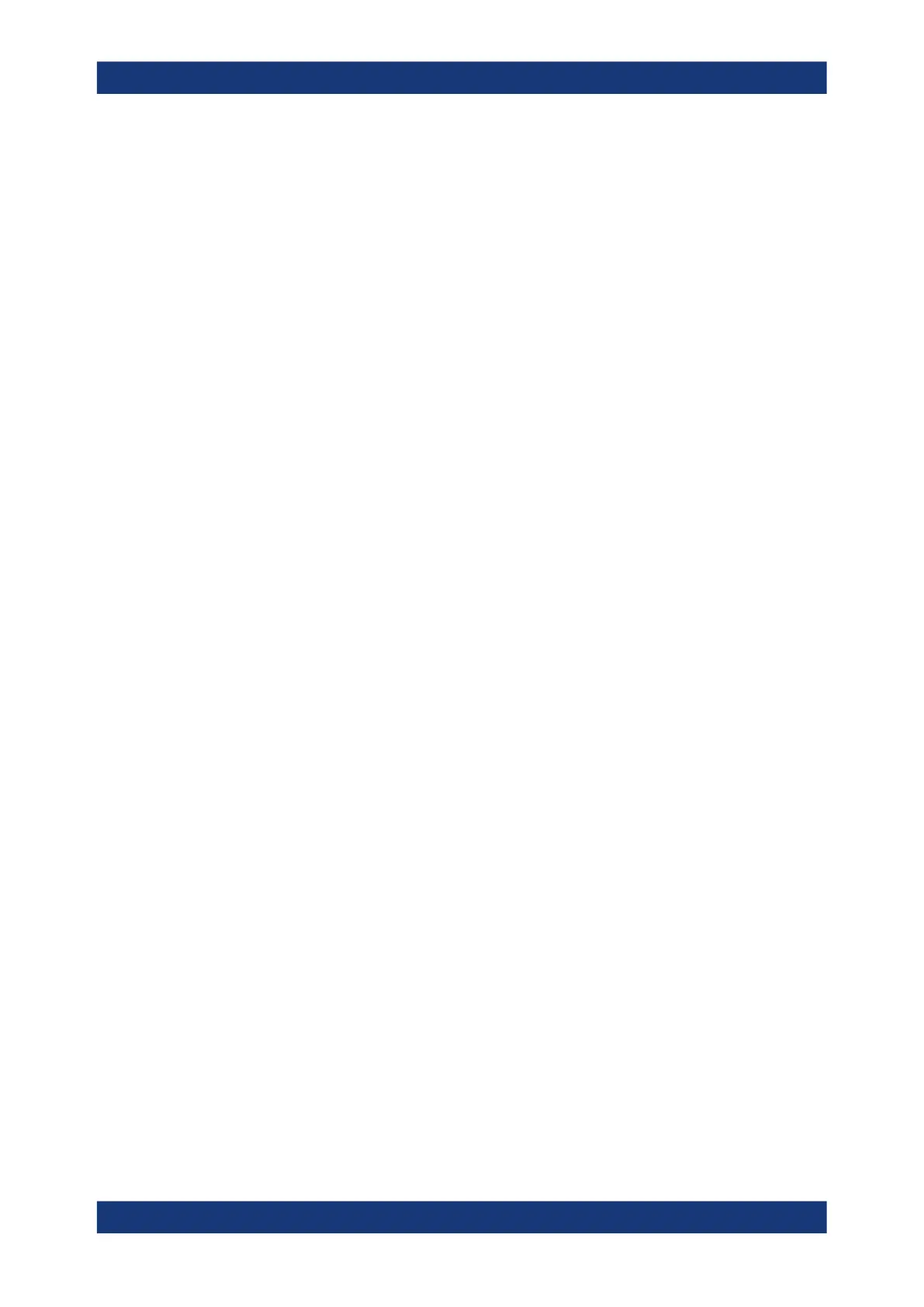Acquisition and waveform setup
R&S
®
RTP
177User Manual 1337.9952.02 ─ 12
Range
Sets the voltage range of a R&S RT-ZHD probe. You can set the range on the probe
control box or at the oscilloscope.
"Auto"
The voltage range is set only at the oscilloscope with "Vertical scale".
"Low"
Sets the lower voltage range of the connected probe. The selected
value is shown in "Auto Attenuation".
"High"
Sets the higher voltage range of the connected probe. The selected
value is shown in "Auto Attenuation".
Remote command:
PROBe<m>:SETup:ADVanced:RANGe on page 1216
BW limit
Activates the lowpass filter in the probe control box and displays the used limit. You
can also set the filter directly on the probe control box.
Remote command:
PROBe<m>:SETup:ADVanced:FILTer on page 1217
Buzzer
Activates the acoustic overrange warning in the probe control box. You can also acti-
vate the sound directly on the probe control box.
Remote command:
PROBe<m>:SETup:ADVanced:AUDioverload on page 1217
Negative, Positive, Differential Overrange
The color turns red if the voltage exceeds the probe range. The indicators are also
available on the probe control box.
5.6.5 Modular probes
The probes of the R&S RT-ZM family are modular probes. They have a probe head
and a probe amplifier connected by a cable, and various probe tip modules and tip
cables for different applications. R&S RT-ZM probes are equipped with
Rohde & Schwarz probe interface, and provide special features: ProbeMeter, micro
button, and a wide offset compensation range.
If you connect the R&S RT-ZM probe to the external trigger input, you can adjust only
the trigger level and the probe mode. The instrument sets the trigger level to the probe
offset value (DM, CM, P or N, depending on the probe mode).
The following shared probe settings are available:
●
"Type, Name, Bandwidth" on page 166
●
"Detect AutoZero, Use AutoZero" on page 166
Special features of the Rohde & Schwarz probe interface are described in these sec-
tions:
●
"Probe unit, Auto attenuation" on page 168
●
"Micro button action" on page 168
Probes

